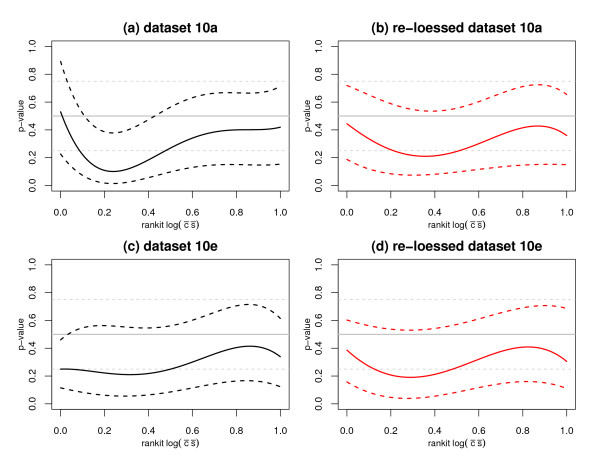Figure 3.

Estimates of the null p-value quartiles vary as a function of signal intensity for datasets 10a (a, b) and 10e (c, d); although less so for the re-loessed data. The x-axes correspond to the rankit (i.e., ) of the log of the product of the expression means. The y-axes correspond the observed two-sided p-values. Solid and dashed grey lines indicate the theoretical medians and quartiles, respectively. The null p-values were modeled as a function of a 4th order polynomial for rankit intensity. Black and red lines correspond to the quantile regression fits for τ = 0.5 (solid) and τ = 0.25, 0.75 (dashed). Portions of this figure appear with permission in the response to [2].
